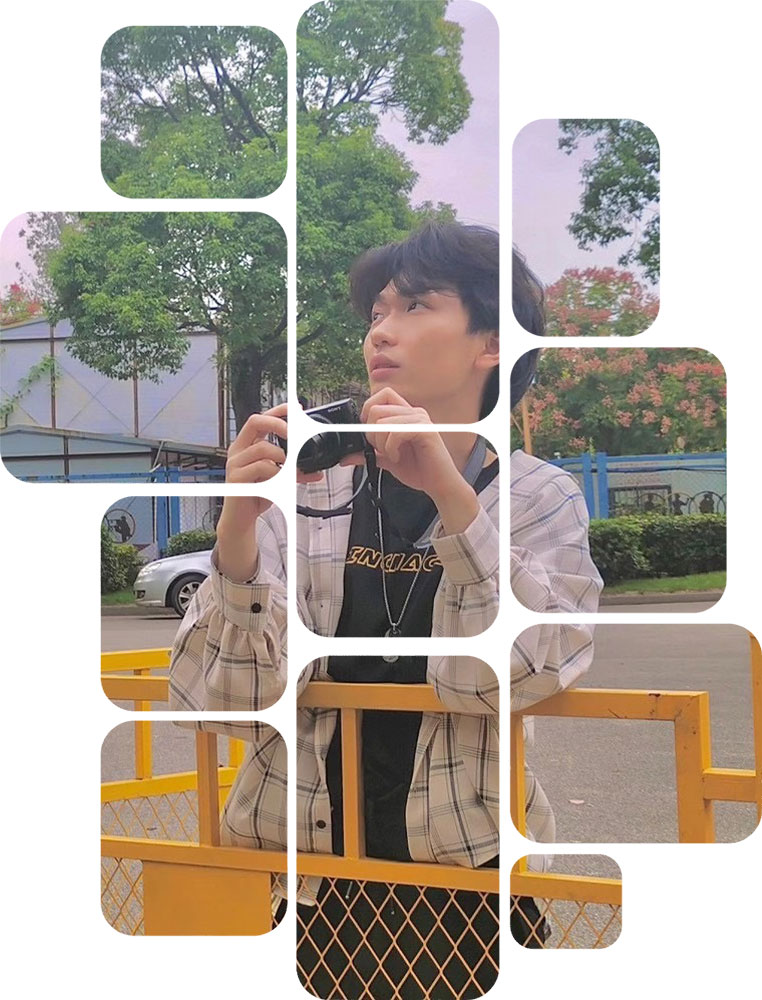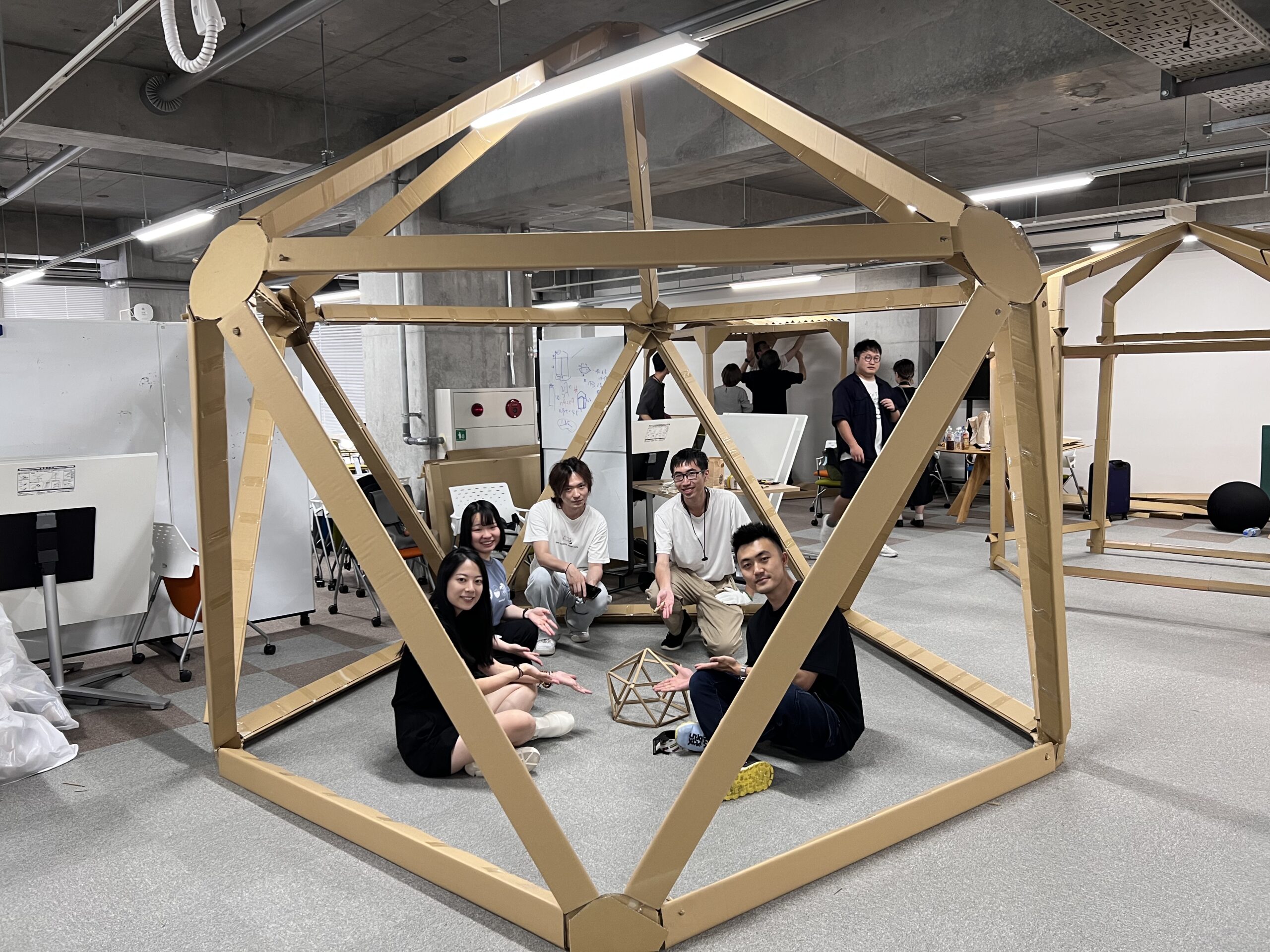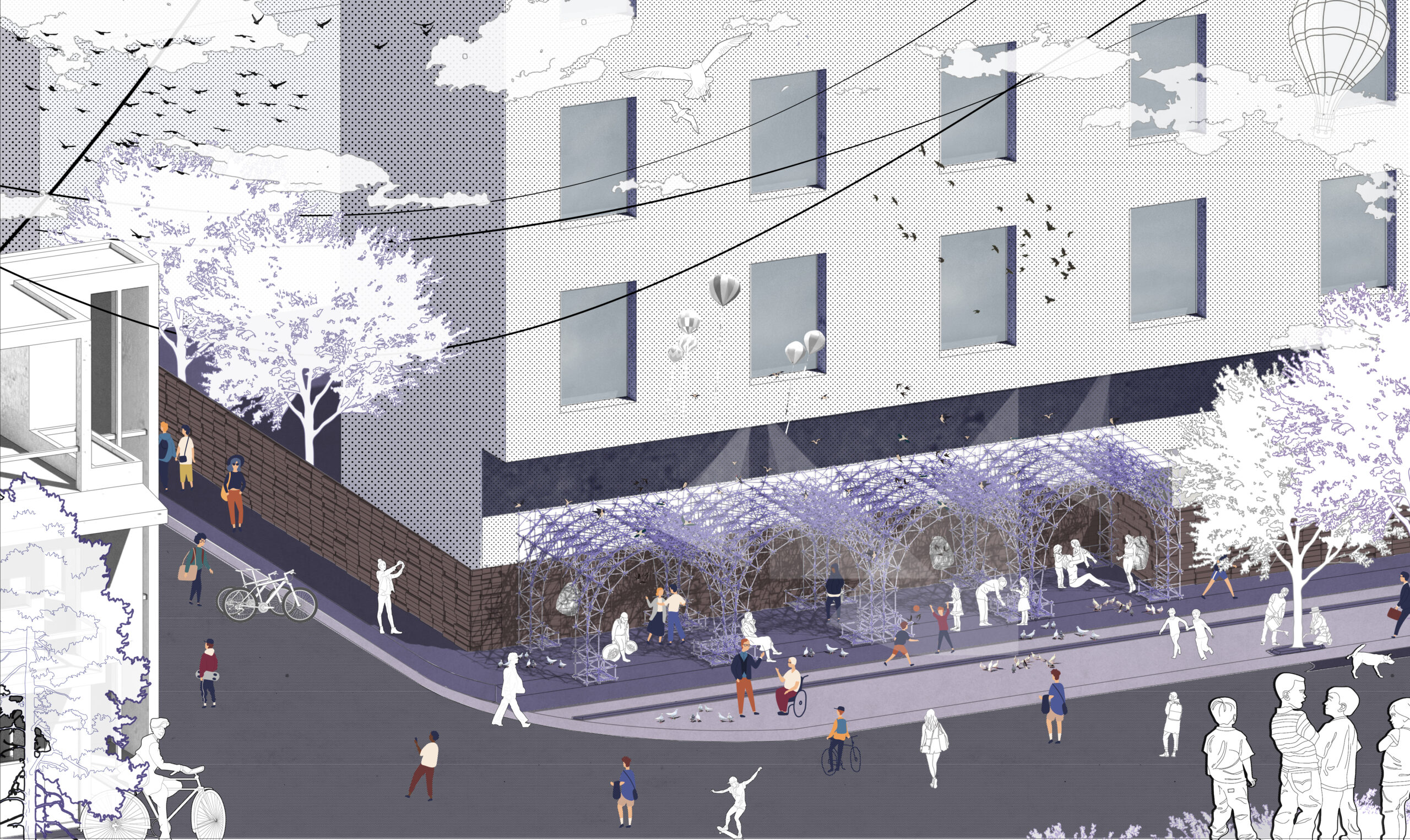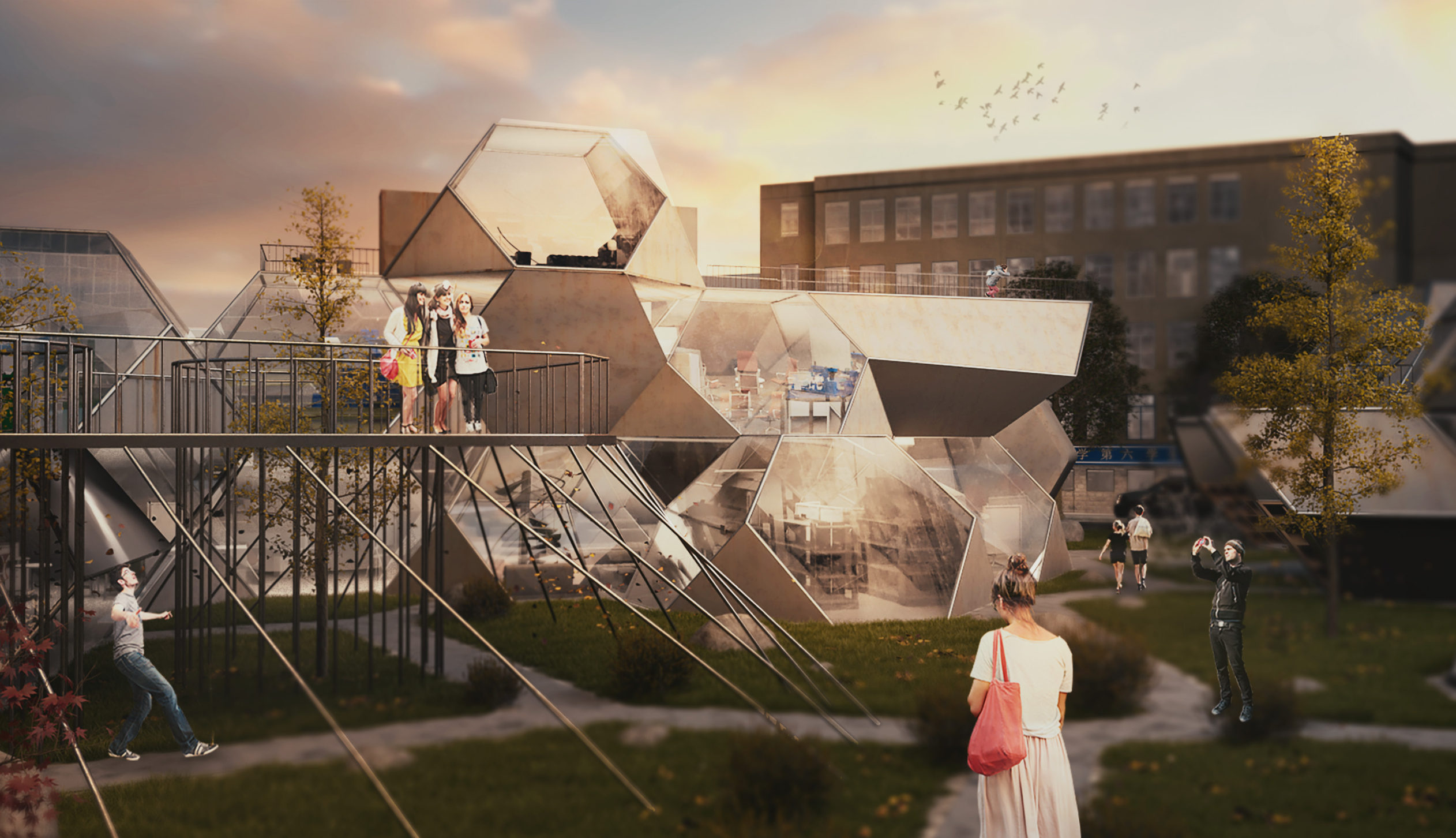Critical issue is maintaining a sense of tranquility while ensuring the space retains sufficient vitality. To address this, I used virtual boundaries to create a visual separation effect. Virtual boundaries do not entirely block visibility but instead establish a subtle sense of division, making people aware of the boundaries without feeling completely isolated. This design technique maintains spatial fluidity while ensuring an appropriate level of social distancing.
- ABOUT
Yongming Huang
Download my CVYongming Huang is a Ph.D. student at the Graduate School of Horticulture, Chiba University, specializing in the Landscape Course (Landscape Architecture). He is also one of the founders of Nature AI Lab, where he serves as both a Researcher and the Head of Coordination. His research focuses on the interdisciplinary application of big data and machine learning technologies in urban vitality analysis—particularly addressing environmental justice and macro-/micro-scale urban vibrancy through quantitative studies employing various advanced methods. He holds a Master of Architecture and Environmental Design (Urban and Architecture) from Kyoto University of the Arts, and a Bachelor’s degree in Environmental Design (Architecture) from the College of Communication and Art Design at the University of Shanghai for Science and Technology (USST). His recent work was accepted for presentation at the abstract sessions of ACSP, EDRA 2024, and IFLA 2024. Yongming’s research interests include human–environment interaction and well-being, urban vitality, and environmental justice.

Main Research Themes
Space quality and vitality
The interdisciplinary application of big data and machine learning technologies to analyze the association between built environment and street vitality.
Spatial morphology and human activity patterns
The study of spatial morphology and human activity patterns reveals how various architectural and urban forms influence interactions and behaviors with space.
Human-nature Interaction and Wellbeing
Exploring the dynamic relationships between humans and urban natural environments to enhance mental and physical health.Exploring the dynamic relationships between humans and urban natural environments to enhance mental and physical health.
Interests
Portfolio
As human society expands, our living spaces gradually encroach on the habitats of natural wildlife, leading to an increasing number of conflicts between humans and animals. Humans have become less tolerant of other species entering their domains, and even contact between people has diminished. Recently, there has been a growing indifference towards urban public spaces.
Both on campuses and in society at large, many spaces remain abandoned for long periods. The transition from vacating a space to establishing a new function can take months or even years, involving factors such as design, timelines, funding, and project approval. During this time, is there a way to reduce the inconvenience and disruption caused to the surrounding areas due to the lack of functionality? My answer is temporary buildings.
Latest Articles
Featured Paper SCI: Huang, Yongming., Chen, Mingze*,. Xiamengwei, Zhang., Ryosuke, Shimoda., Ruochen, Yang. Multi-Scale Street Vitality Analytics: A Comprehensive Review of Technologies, Data, and Applications. Buildings 2025 | https://doi.org/10.3390/buildings15213987 Street vitality is an important indicator of urban attractiveness and sustainable development, and it has become a central topic in contemporary urban planning and research. Using the PRISMA […]

My team is looking for part-time researchers interested in using cutting-edge landscape and urban planning technologies. Graduate or senior undergraduate students with backgrounds in related or interdisciplinary disciplines are welcome to join us. Currently, We are working on the projects: Research Title: Monitoring and Understanding Human-Environment Interaction in Urban Green Spaces Research Topic: This study […]
Qualifications: This position is open to advanced undergraduate or graduate students with a background in urban forestry, urban planning, landscape architecture, computer science, or related fields. Desired qualifications include: – Passion for urban green space planning/urban design and state-of-the-art technologies – Experience with Python programming (computer vision) – Enjoys hands-on and practical work – Able […]

Urban planners, transportation engineers, and park managers lack systematic tools to monitor and predict the usage of urban parks and greenways. Measuring the usage patterns of urban nature is a prerequisite to understanding which factors are associated with the success of the place. Such monitoring data can contribute to a better understanding of how to improve urban residents’ exposure to nature and well-being.
Projects

Disaster Relief Housing Made of Paper
August 5, 2023
titled "Balancing Work Production and Social Contribution". The project involved actual construction within the team and took about three days to complete. The goal was to create a temporary shelter by covering a completed framework with materials such as vinyl sheets, thus giving it the functionality of temporary housing. Special attention was given to the seams in the construction.
More Detail
A Warm Home
July 16, 2020
A bedroom in a shared apartment. The rent is 2,000 yuan per month, and the tenant is a graduate student at Shanghai University. Since we didn't want to spend a lot of money, we decided to use the limited funds we had to create a cozy atmosphere in the space. To achieve this, we used pallet boards as the primary material. The reason for choosing pallet boards is that they are uniformly sized, easy to assemble, and can be disassembled and reassembled as needed by removing and reattaching the boards and legs.
More Detail



